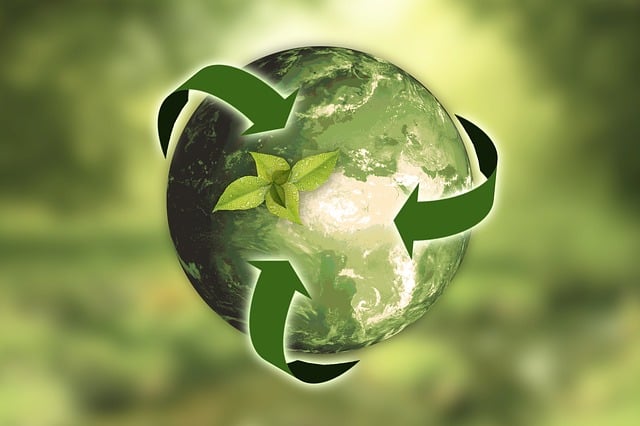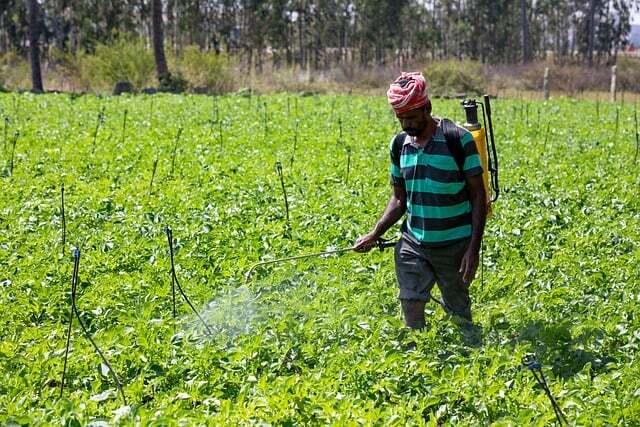"Integrating Social Welfare and Environmental Sustainability: A Path Toward Equitable and Eco-Friendly Development"

[ Shahzad Ali Minhas ]
Introduction
Traditional social welfare is just one section of the activities the government provides under their assumptions. Different programs, policies, and programs are provided for the betterment of persons and groups through basic health care, education, and housing services. All the soundings on issues affecting the environment globally slowly brought the focus of attention towards interactive issues involving social welfare and environmental sustainability. Hence, it simply means that the social welfare systems could no longer be wrought with exclusive separation from environmental considerations and was broadened into how social welfare programs can assist and impact the attainment of environmental sustainability.
It attempts to speak more on the issue of social welfare and environmental sustainability by linking policies over social welfare that would bring ecological conservation issues and degradation. With this, it attempts to understand how policymakers and societies come together to work toward a future viewed as both more sustainable and more equitable.

1. Social Welfare and Environmental Sustainability
Interdependence Generally, social welfare and environmental sustainability are still two separate fields pursued separately. However, very crucial is the area wherein both converge. It falls in the twin disciplines which aim for higher levels of human well-being meeting needs or an environment-friendly earth to be used shortly. Indeed, it would appear that climate change, pollution, and exhaustion of natural resources would most affect the most sensitive population, and therefore there must be some overlap in social welfare regarding the environment.
Poor communities are those who have been exposed to natural calamities also, as the most poorly housed poor villagers in areas that flood or worse, less well-off communities that are subjected to the worst effects of air and water pollution. Environmental sustainability is the preservation of nature, it is more directly connected with human rights, health, and welfare. Any such integration of social welfare with environmental sustainability, therefore, would be holistic in terms of social well-being.
2. Environmental Degradation and Social Welfare
Environmental degradation is another long process, traceable as far back as problems of deforestation, pollution, and climatic change, posing a fundamentally different yet another challenge to the work that is being done in social welfare. For climate-related disasters tend to happen many more times and in more devastating ways than to leave communities in tatters, as they destroy and strain the social welfare system and undermine the attempt to reduce poverty and inequality.
Farm income can be the source of living in the rural. From this view, environmental degradation is immediately translated into a loss of food security and economic stability. Climate change permits crops to dry up and wilt. Thus, with the consequential loss of value in their returns, farmers have no better option but to rely more on the welfare policies dished out by the government. It's the same with natural calamities, where in the course of evacuating the dwellers from their homes, they later require a growing trend of housing, health care, and other welfare services, most of the times congesting the extant welfare systems.
Another very serious problem is pollution. Industrial pollution falls seriously disproportionately on poorer areas; it does so partly because the people who live in residence here have no economic clout to call for cleaner conditions or reassignment to less-polluted locations. Much wasted health spending and strain on social welfare programs flow from long-term health effects caused by toxins in industrial waste or bad air quality.
 3.Role of Social Welfare in Mitigating Effects on Environment
3.Role of Social Welfare in Mitigating Effects on Environment
Lastly, it is through social welfare policy that the environmental issues may be solved strategically. Social programs can be designed such that sustainability in terms of the environment is achieved by reducing some environmental impact while still enhancing life quality in most cases. Here are ways through which social welfare policies can contribute to the environment:
A. Green Social Welfare Programs:
It was targeted to the design of green uses of the environment. Example: Employment relief program that is focused on teaching people how to apply renewable energy and sustainable agriculture. In a way does take off some unemployment and in fact, pushes on the environment-friendly agenda. Such programs give jobs however those would then be focused on a greener economy.
Already, they have the green social welfare programs in Germany and Denmark through which the subsidy is given to people to install solar panels or opt for an electric vehicle. Such a green social welfare program makes them decrease their carbon impression while keeping the relevant financially vulnerable persons better off at the same time.
B. Sustainable Housing Initiatives:
Habitable housing is a social welfare; hence it will easily transform long-term effects in terms of societal and environmental sustainability. It postulates that such housing will be energy-efficient, ecologically friendly building materials, and organize neighborhoods with green spaces. This will have lesser energy consumption, a lesser carbon footprint, and healthy living conditions. For instance, energy efficiency and sustainability can focus on social housing programs such as the case studies concerning Sweden and the Netherlands. To start with, through a housing program, an individual will be able to obtain affordable homes that are climate-friendly, equipped with energy-efficient appliances, solar power, and green infrastructure that may well reduce utility costs for its inhabitants while ensuring a minimal ecological footprint of such a housing project.
 C. Food security and sustainable agriculture:
C. Food security and sustainable agriculture:
Food security is of greater significance to human welfare, especially in developing countries as it has recorded its high levels of poverty. The quest for sustainable agriculture meant the production of food in adequate quantities with minimal destruction to the environment. Welfare programs for small-scale farmers to change the way they could be farming-organic and crop rotation and water harvesting in a friendly manner to the environment.
This greener crop cycle can, therefore, offer governments some sort of subsidies or incentives to the farmers themselves so that it supports increased food supply among the poor and other deprived sections of society, while at the same time reducing the impacts of environmental degradation as well because one of the principal causes for deforestation and greenhouse emissions starts cursing itself.
D. Health and Environmental Justice:
Public health has been said to supplement environmental conditions. Health-based social welfare programs must henceforth take into consideration the environmental conditions in general terms of the likes of air and water quality amongst others. Efforts for environmental justice are therefore defined as the ability of low-income communities to be free from disproportionate harmful effects brought by pollution and other forms of environmental hazard. In that perspective, the government would have strived to make life for all citizens have quality standards of clean air and water resources and safe homes to environmental justice for it to be achieved for integration into social welfare. This theory thus goes on to postulate that those who support that nexus of social welfare and environmental sustainability take the assumption that interventions on the premises articulated from health inequalities based on pollution would improve public health outcomes, and thereby put less pressure on health-care systems themselves. Environmental justice programs whose clean-up activities become a channel for quality of areas attainment improvement also employ the inhabitants in derelict and very low-income communities hence affording economic benefits while working for their environment.
Problems.
That Exist in Social Welfare and Environmental Sustainability Integration The large integration problems, that are welfare-positive and environmental system-sustainable do not out-gross them; their hugeness is as huge as theirs. The problems range between financing political resistance and complications in managing short-term welfare needs versus long-term environmental objectives.
Fund.
A. Fund is one of the large obstacles facing the embracing of green social welfare programs. After all, social welfare and environmental sustainability do not come cheap and the trouble that governments in developing countries are bothered with is finding enough resources both for their social welfare and for environmental sustainability. Though the long-term savings that can be accrued due to such initiatives may be huge, the cost of initiating such projects may be too high. Moreover, most of the austerity measures that most countries have undertaken have primarily been based on cuts in social welfare funds thus making environmentally related programs a hard sell to make.
B. Political Opposition: It needs political will to balance out social welfare with environmental sustainability. However, this might also be quite a challenge because there are sectors that would resist such an amalgamation. Examples would include fossil fuel companies, with which it generates quite a scale of environmental problems but are quite politically influential and hard to legislate in favor of welfare policies. Another point is that the transformation of traditional systems of social welfare is often met by political unwillingness because it is leaving the status quo of economic and social structures.
C. Balancing Short-Term and Long-Term Concerns Welfare programs hardly ever target relief efforts for short-term concerns, homelessness, and unemployment.
This is basically because environmental sustainability concerns long-term problems or investments. For such a policymaker though, what matters is balancing the playing field between the short-term need for social needs and laying solutions that maybe one may not feel until years later. The short-term requirement that the policymaker has to balance with the long-term in facing these challenges stands.
4.Innovative Approaches in Social Welfare And Environmental Aims
A. Some of these issues contribute to social welfare sustainability and the environment but their methods are revolutionary and some of them comprise: It is in this direction that the relationship between environmental conservation and UBI exists. Funding for a UBI could be sourced from carbon taxes and other environmental levies. Here, the effects of such policies on the environment are captured in the balancing act, and the working poor in industries already targeted for carbon reduction benefit as they find alternative employment that is more environmentally friendly.
B. Social Welfare and Circular Economies A social welfare program may lead to a circular economy that eventually would end up at the end of a throw-away world when producers remanufacture, reuse, and recycle. Welfare programs can be provided in pieces of training and employment in recycling and waste management also in sustainable-friendly industries for manufacturing. This will eventually end up with a destructive tide on the environment while concurrently helping to employ populations in vulnerable circumstances.

C. Education and Public Awareness: Education promotes social welfare just as supporting environmental sustainability. Therefore, the social welfare programs spearheaded through healthy education about the environment can allow men to be free to make ecologically aware decisions day in and day out. Additionally, public awareness will ensure that the energy consumed in the community is done through sustainable operations, recycling, and even purchases from, hence locally owned green establishments.
Conclusion
Yes, social welfare and environmental sustainability complement each other in this probing into those interlinked solutions to these questions of poverty, inequality, and environmental degradation. An ecological approach would do better for the livelihoods of people and that of the earth with social welfare initiatives. Some of these problems naturally occur in the alignment process of social welfare with environmental sustainability through innovative approaches because training people for green jobs, building sustainable houses, and conducting environmental justice initiatives can turn into a helpful tool in this process. Climate change and its threatening nature to the environment have formed a continued risk for such increasingly vulnerable populations, and there is an ever-growing need to evolve social welfare systems that are both socially just and environmentally sustainable. It follows that social welfare depends on how much it can respond to the level of capacity of the continued change in demand for environmental sustainability. Only in this way would such an approach pay heed to the implications that social policies hold for the environment and thus facilitate societies to produce resilient and equitable systems yielding dividends to people as well as to the planet.
Summary:
Social Welfare along with Environmental Sustainability in Relation
Social welfare and environmental sustainability are related affairs which are not so far apart from each other because both look toward achieving a condition for betterment in the welfare condition of people and communities in large. Such factors as climatic changes, pollution, and depletion of resources only exacerbate the levels of poverty that impact welfare systems under tremendous pressures and further entrench them into extreme vulnerabilities. In such scenarios, even welfare programs can play a major role in redirecting the benefits of sustainable practices to counter adverse impacts on such vulnerable populations.
Green program approaches include green job programs that bring green jobs and sustainable housing with environmental justice. Green programs do integrate social welfare through mainstreaming of environmental goals within the program. Environmental protection in itself can be furthered through public health, inequality reduction, and economic opportunities. Challenges are as follows: financial, political resistance, and short-term against the long-term goals.
Hence, all social welfare policies must ensure that there be sustainable environmental conditions in the production processes in order to enable an upgrading of quality of life for all in a harmonious and balanced way while protecting the planet as well.